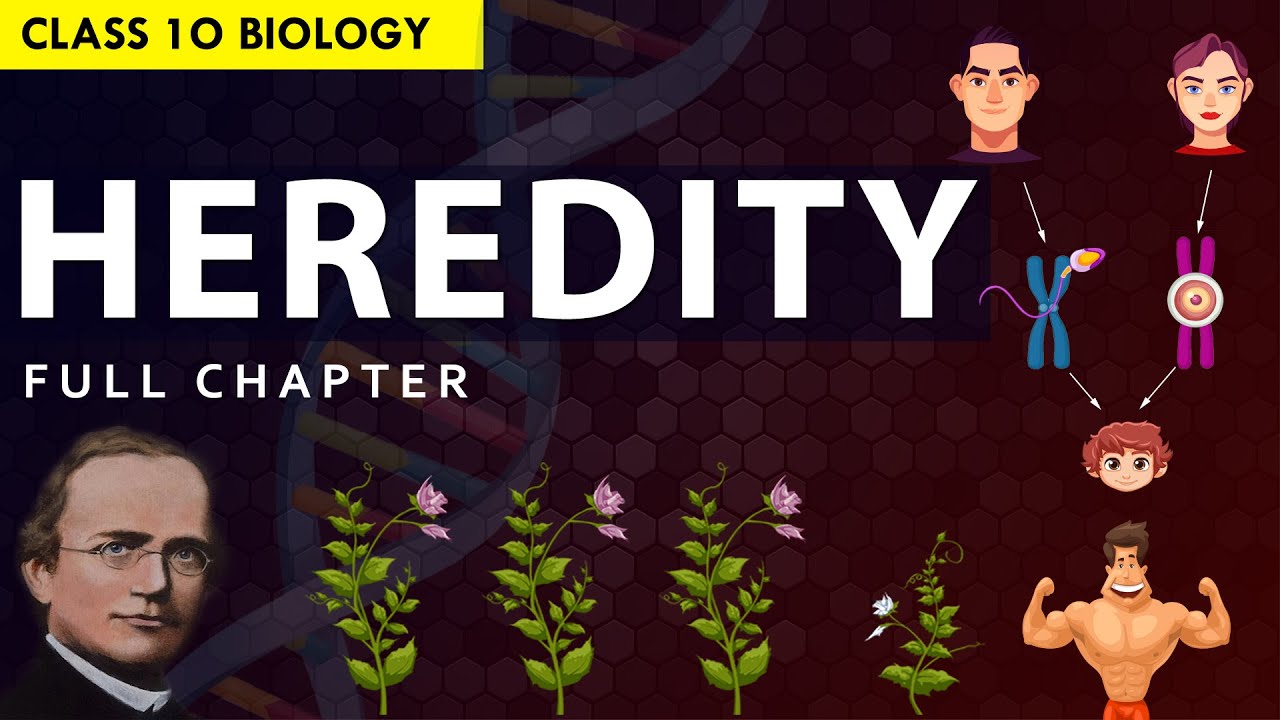The Roles of Genes in Heredity and The Effects of Genes in our Environment
Summary
TLDRThis video explains heredity, the process of passing traits from parents to offspring through genes located on chromosomes. It covers key concepts such as dominant and recessive alleles, how genes influence traits like eye and hair color, and the impact of environmental factors on gene expression. The video also discusses genetic disorders like Down syndrome, sickle cell disease, and PKU, highlighting how mutations affect health. It emphasizes the importance of genes in protein synthesis and the complex interactions between genetic and environmental factors in determining characteristics.
Takeaways
- 😀 Heredity refers to the passing of traits from parents to their offspring through sexual or asexual reproduction.
- 😀 Genes, located in chromosomes, are the hereditary factors that determine traits and can influence more than one characteristic.
- 😀 Alleles are different forms of a gene that can lead to observable traits, such as eye or hair color.
- 😀 Dominant genes express their traits over recessive ones, and these traits can be inherited through family generations.
- 😀 Recessive genes only show their effects when an individual inherits two copies of the recessive allele.
- 😀 Genetic disorders like Down syndrome, sickle cell disease, and phenylketonuria (PKU) can result from mutations in specific genes.
- 😀 Traits such as skin color and height are determined by genetic factors, but environmental factors can also influence gene expression.
- 😀 Environmental factors like light and temperature can impact the expression of certain traits, such as chlorophyll production in plants and hair color in Himalayan rabbits.
- 😀 Genetic disorders like hemophilia are caused by mutations in genes responsible for producing essential proteins, such as clotting factors.
- 😀 The interaction between genes and the environment plays a significant role in determining the expression of genetic traits, highlighting the complexity of heredity.
Q & A
What is heredity?
-Heredity is the passing of traits from parents to their offspring, which can occur through sexual or asexual reproduction. Traits are encoded in genes located in the chromosomes of each cell.
Where are genes located in human cells?
-Genes are located in the chromosomes within the nucleus of human cells. Each cell contains thousands of different genes.
What is the concept of alleles?
-Alleles are variant forms of a gene. For each gene, an individual has two alleles, one inherited from each parent. These alleles can be dominant or recessive.
What is the difference between dominant and recessive alleles?
-A dominant allele expresses its trait even if only one copy is present, while a recessive allele only expresses its trait if both alleles are the same and recessive.
Can a single gene influence multiple traits?
-Yes, a single gene can influence more than one trait. This is known as pleiotropy, where one gene affects multiple phenotypic characteristics.
What are some examples of traits controlled by dominant alleles?
-Traits such as dimples, widow’s peak, and certain hairlines are examples of dominant traits that tend to run in families.
What is a recessive genetic trait?
-A recessive trait, such as albinism, is only expressed when both alleles for the gene are recessive. If one allele is dominant, the recessive trait will not be visible.
How are genetic disorders like Down syndrome inherited?
-Down syndrome is caused by an extra copy of chromosome 21, known as trisomy 21. It leads to developmental delays and is a genetic condition that occurs in every cell of the body.
What is sickle cell disease and how is it inherited?
-Sickle cell disease is a genetic disorder where the red blood cells are abnormally shaped, affecting their ability to carry oxygen. It is inherited when both parents carry a copy of the sickle cell gene.
How can environmental factors influence genetic traits?
-Environmental factors can modify the expression of genetic traits. For example, plants produce chlorophyll only in the presence of light, and the Himalayan rabbit’s fur color is influenced by temperature.
What is hemophilia and how is it inherited?
-Hemophilia is a bleeding disorder caused by a mutation in genes that produce clotting factor proteins. It is typically inherited in an X-linked recessive pattern, meaning it predominantly affects males.
Outlines

Cette section est réservée aux utilisateurs payants. Améliorez votre compte pour accéder à cette section.
Améliorer maintenantMindmap

Cette section est réservée aux utilisateurs payants. Améliorez votre compte pour accéder à cette section.
Améliorer maintenantKeywords

Cette section est réservée aux utilisateurs payants. Améliorez votre compte pour accéder à cette section.
Améliorer maintenantHighlights

Cette section est réservée aux utilisateurs payants. Améliorez votre compte pour accéder à cette section.
Améliorer maintenantTranscripts

Cette section est réservée aux utilisateurs payants. Améliorez votre compte pour accéder à cette section.
Améliorer maintenantVoir Plus de Vidéos Connexes

CLASS 10 HEREDITY & EVOLUTION Full chapter explanation (Animation) | NCERT Class 10 Chapter 8

AP Biology: Intro to Sexual Reproduction & Heredity

BAB 6 PEWARISAN SIFAT DAN BIOTEKNOLOGI Part 1 (IPA Kelas 9 Kurikulum Merdeka)

Kamu unik, dan genmu adalah buktinya! Simak video ini....bagaimana DNA membentuk dirimu🧍🏻👋🏻

Materi genetik (kromosom)

Introduction To Genetics and Heredity
5.0 / 5 (0 votes)
